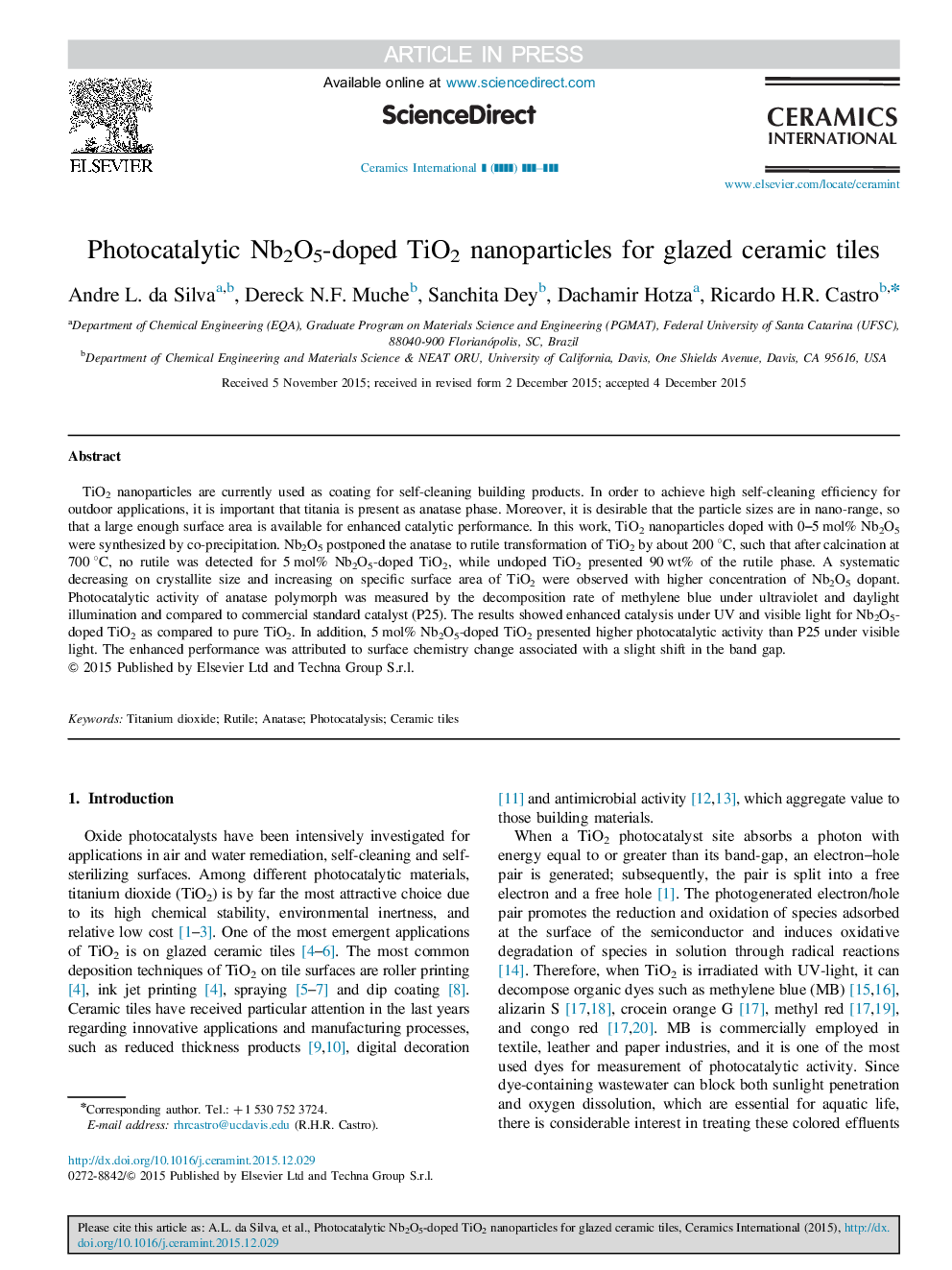| Article ID | Journal | Published Year | Pages | File Type |
|---|---|---|---|---|
| 10624386 | Ceramics International | 2016 | 10 Pages |
Abstract
TiO2 nanoparticles are currently used as coating for self-cleaning building products. In order to achieve high self-cleaning efficiency for outdoor applications, it is important that titania is present as anatase phase. Moreover, it is desirable that the particle sizes are in nano-range, so that a large enough surface area is available for enhanced catalytic performance. In this work, TiO2 nanoparticles doped with 0-5 mol% Nb2O5 were synthesized by co-precipitation. Nb2O5 postponed the anatase to rutile transformation of TiO2 by about 200 °C, such that after calcination at 700 °C, no rutile was detected for 5 mol% Nb2O5-doped TiO2, while undoped TiO2 presented 90 wt% of the rutile phase. A systematic decreasing on crystallite size and increasing on specific surface area of TiO2 were observed with higher concentration of Nb2O5 dopant. Photocatalytic activity of anatase polymorph was measured by the decomposition rate of methylene blue under ultraviolet and daylight illumination and compared to commercial standard catalyst (P25). The results showed enhanced catalysis under UV and visible light for Nb2O5-doped TiO2 as compared to pure TiO2. In addition, 5 mol% Nb2O5-doped TiO2 presented higher photocatalytic activity than P25 under visible light. The enhanced performance was attributed to surface chemistry change associated with a slight shift in the band gap.
Related Topics
Physical Sciences and Engineering
Materials Science
Ceramics and Composites
Authors
Andre L. da Silva, Dereck N.F. Muche, Sanchita Dey, Dachamir Hotza, Ricardo H.R. Castro,
